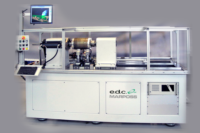COVENTRY, England—Engineers at the Manufacturing Technology Centre here are developing an electric motor that features major components made with additive manufacturing technology. The goal is to produce a device with increased motor power, despite a reduction in the size and mass of key components. Other benefits include a part count reduction and increased manufacturing efficiency due to reduced assembly time and costs.
Although a 3D-printed electric motor has been the subject of theoretical studies in the past, it has never reached commercial reality. However, the MTC engineers have already developed a way of producing an electric motor casing that includes integrated cooling channels. The redesign of the casing by implementing liquid cooling channels enables the motor to produce more power without overheating, in addition to a 10 percent weight savings and a 30 percent reduction in size.
“Additive manufacturing is a key enabler for developing the complex features and forms essential to improving the performance and functionality of electric motors,” says Steve Nesbitt, chief technologist at MTC. “The process of manufacturing electric motors has a number of challenges, including complex or manual assembly, materials that are difficult to process and which can be expensive, thermal management, and the need to make the assembly lighter.
“By leveraging the capabilities of additive manufacture through product redesign, major benefits can be achieved in cost, waste reduction, performance and ease of manufacture,” claims Nesbitt. “Additive manufacturing is a key enabler for developing complex features and forms, essential to improving the functionality and performance of electric motors, with singular and multimaterial solutions.”



